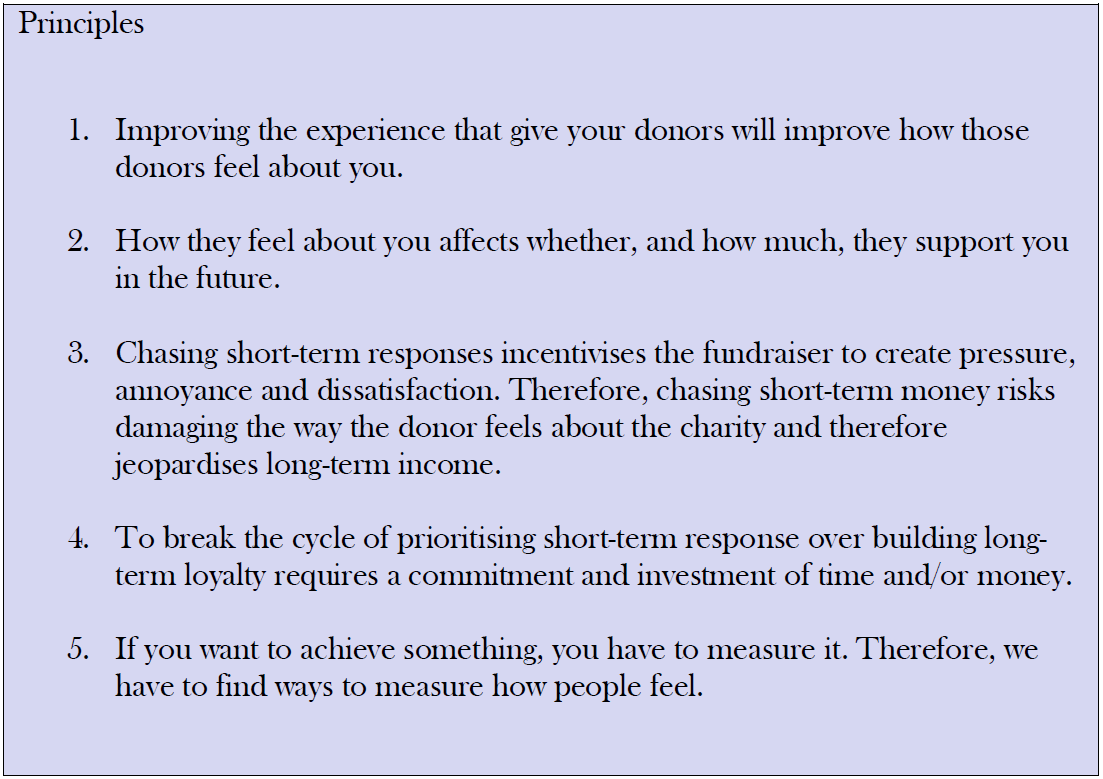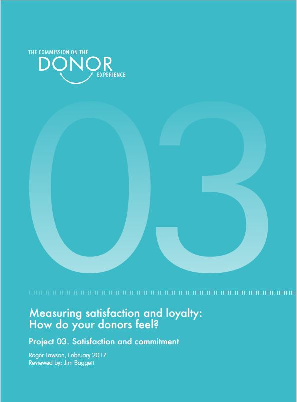CDE project 3 summary: satisfaction and commitment
- Written by
- The Commission on the Donor Experience
- Added
- May 06, 2017
Measuring satisfaction and loyalty: How do your donors feel?
Roger Lawson, February 2017
Reviewed by: Jim Baggett



Summary guidance

Principles
We believe that an obsession with short-term financial KPIs is the single biggest reason that donors are dissatisfied with the way charities fundraise. It forces us to follow ever more aggressive strategies in order to achieve the target amount of income or new donors.
It also means that we never understand the impact of our communications in terms of how we make donors feel about us, or how emotionally engaged they are with us.
Measuring lifetime value is a step forward. It’s something many charities do, and it encourages all of us to think about how today’s actions affect giving in the future. But it is still measuring transactions, not feelings.
If you are reading this, we assume that you want to improve the experience your donors have of giving to you. In the belief that if you don’t measure it you won’t do it, we strongly believe that you need to have KPIs in place for measuring the impact of that improvement in the donor experience.
In short, you need to be measuring how donors feel – their loyalty, commitment or satisfaction.
Here are the principles that sit behind our recommendations.

Actions
We believe that it is essential to measure the emotional loyalty that donors feel if you are serious about improving the donor experience. We have outlined five steps to follow to achieve this goal.
1. Commit to growing donor loyalty by delivering a better donor experience.
- We haven’t just said ‘offer a better experience’; we’ve said that you should do this to ‘grow donor loyalty’ – that is the aim.
- Understand that making donors feel good about supporting you is good for them and good for you, as it will help you raise long term income.
- There is a growing body of evidence that making your donors feel good about giving to you leads to longer term, more valuable support.
2. Find out the emotional results that donors value and want from you
- Keep it simple, so discover what is most important to your donors and focus on that.
- There is no substitute for knowing why donors give and what they need or want from you.
See CDE project 6 – The use an misuse of emotion.
3. Measure how they feel
- Once you know what your donors value, measure how well you deliver.
- This is not about stopping your existing measurement of response and income, but building on it to understand how your communications (especially fundraising) influence how donors feel about you.
4. Report it
You should report your findings. By telling colleagues (as many people as possible), you will grow understanding of what donors need, share your commitment to giving them a better experience and increase colleagues’ confidence to invest in actually delivering it.
5. Use this learning to change something. Test it and measure again. Keep improving.
Once you have measured donor feeling, decide what you think you need to do better and test something different – anything! – and monitor changes in both how the donors feel and how they behave.



















